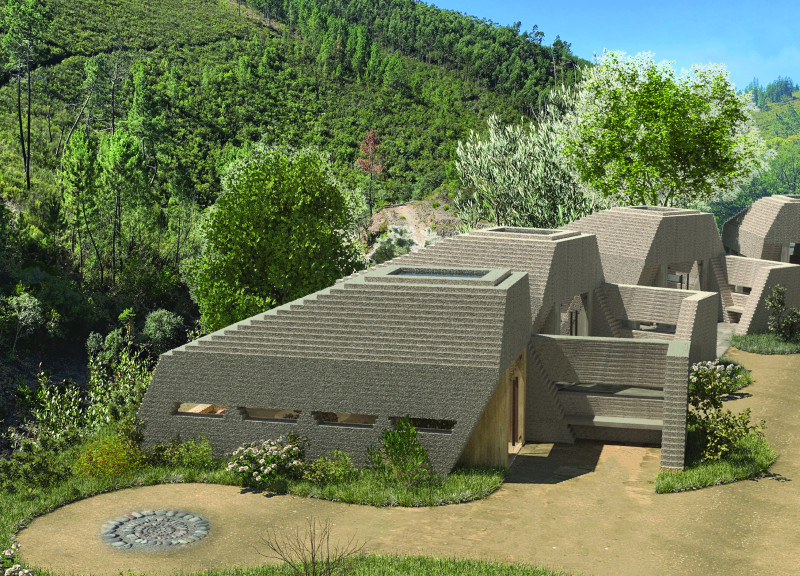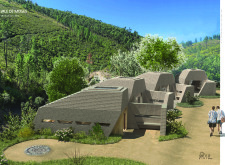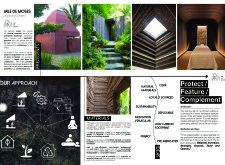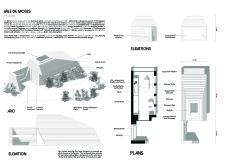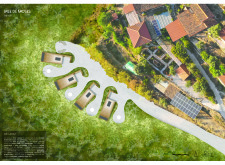5 key facts about this project
Materials and Construction Techniques
The project utilizes locally sourced materials that prioritize environmental sustainability. Key materials include cork for thermal and acoustic insulation, wood for interior elements, and local stone for foundation work, creating a cohesive link to the site. Each cabin features large glass windows that optimize natural light and views, facilitating an immersive connection with the landscape. The design incorporates prefabrication methods to minimize construction waste and streamline the building process.
Design Approach and Functional Layout
The architecture features a series of cabins arranged linearly along the site’s natural contours. This not only respects the topography but also enhances privacy for each unit. The stepped, cubic form of the cabins aids in visual interest while also providing adaptable spaces for meditation, group activities, and individual reflection. Features like private gardens and meditation circles further enhance the functionality of the design, allowing users to engage deeply with the environment.
Integration with Nature and Community
A distinctive aspect of the Vale de Moses project is its emphasis on harmonious living with the natural environment. By situating the cabins amidst lush landscapes, the design encourages occupants to experience seasonal changes and natural beauty. The communal outdoor spaces foster social interaction while maintaining opportunities for solitude. This balance highlights the dual objectives of personal reflection and community engagement, setting the project apart from typical meditation retreats that may prioritize one over the other.
For a comprehensive understanding of the architectural plans, architectural sections, and detailed architectural designs of this project, readers are encouraged to explore further information available about the Vale de Moses Meditation Cabins. This deeper insight will provide clarity on the unique architectural ideas and functional details that define this project as a significant addition to architectural practice focused on wellness and sustainability.


